Allah Rakha(A . R) Rehman
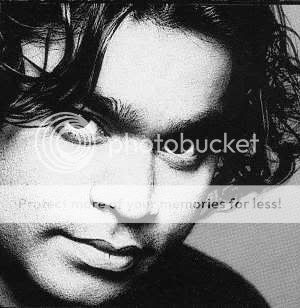
D.O.B : January 6, 1967
Early life and influences
A. R. Rahman is the only son of R. K. Shekhar, a composer, arranger and conductor for Tamil films. His father died when Rahman was nine years old, and his family used to rent out musical equipment as a source of income. Dileep Kumar became A R Rahman after a turning point in his life, as Rahman himself has claimed in several television interviews. The specific incident involved his mother who developed some sort of illness and was leading a painful existence until a Muslim family friend suggested that they pray to in a prominent mosque in the locality. Rahman claims that after fervent prayers his mother's health showed remarkable improvement. Thus, the whole family converted to Islam as a mark of gratitude. Rahman was also a student at PSBB for a short while before changing schools.
During these early years, Rahman served as a keyboardist and an arranger in bands with friends, embracing numerous music genres. He played the keyboard and piano, in addition to the synthesizer, the harmonium and the guitar. His curiosity in the synthesizer in particular increased because, he says, it was the "ideal combination of music and technology."[3] He began training in Carnatic music. At the age of 11, he joined the troupe of Indian composer Ilaiyaraaja as a keyboardist.[3] Those days, Ilaiyaraaja used to get the keyboard and other musical instruments on rent from A. R. Rahman's home that originally belongs to R. K. Shekhar (A. R. Rahman's father). He later played in the orchestra of M. S. Viswanathan and Ramesh Naidu, and accompanied Zakir Hussain and Kunnakudi Vaidyanathan on world tours. The experience allowed him to obtain a scholarship to Trinity College at Oxford University, where he graduated with a degree in Western classical music.[4]
Film scoring and soundtracks
In 1991, Rahman began his own studio, attached to his house, called the Panchathan Record Inn. His music was used in advertisements, the title music of Indian Television channels and music in documentaries, among other projects. Rahman was, at first, hesitant about composing music for the Indian film industry primarily because most film makers at the time used songs as fillers. In 1992, he was approached by film director Mani Ratnam, who offered Rahman the job as composer for his upcoming Tamil language film Roja, at a price of Rs. 25,000. Rahman accepted, and the movie's debut led Rahman to receive the Rajat Kamal award for best music director at the National Film Awards, the first time ever by a first-time film composer. Rahman has since then gone on to win the award three more times (for Minsaara Kanavu (Electric Dreams, Tamil) in 1997, Lagaan (Tax, Hindi) in 2002 and Kannathil Muthamittal (A Kiss on the Cheek, Tamil) in 2003), the most ever by any composer.
When Rahman arrived on the Indian music scene with his first film Roja, he brought about a transformation of film music. Roja was a hit, in its original and dubbed versions, and Rahman followed it up with a number of other popular films, including Bombay, Kadhalan, Indira, Minsaara Kanavu, Muthu and Love Birds. His soundtracks gained him recognition and notice in the Tamil film industry and across the country for his versatality in classical, folk, jazz, reggae, soft rock and other styles. Rangeela, directed by Ram Gopal Varma, marked Rahman's debut in Hindi films. Many popular albums for films including Dil Se and Taal followed. The sales of these albums prompted movie producers to take film music more seriously. Rahman's playback singing in several of his albums was also admired.
Rahman's work is also unique in the fact that his collaborations with some film directors have always resulted in successful albums. In particular, he has worked with Mani Ratnam on ten films until 2006, all of which have been musical hits. Also notable is his collaboration with the director S. Shankar - in Gentleman, Kadhalan, Indian, Jeans, Mudhalvan, Nayak, Boys and Sivaji.
The following article was written in TIME magazine about Rahman's achievements. His first movie album Roja was listed in TIME magazine's "Top 10 Movie Soundtracks of All Time".[5] In addition to influencing western audiences, Rahman also impressed eastern audiences with his music so much that he was hired by Chinese director He Ping to compose the score and soundtrack for the Chinese film Warriors of Heaven and Earth in 2003.[6]
His latest work includes Water, Rang De Basanti, Sillunu Oru Kaadhal, Guru , Varalaru - The History of the Godfather and Sivaji: The Boss. Rahman has scored the movie Provoked and is also working on Shyam Benegal's next venture, Chamki Chameli, which is set for release in late 2007 as well as Jodhaa Akbar.
Rahman is a recipient of the Padma Shri, one of the highest civilian awards in India.
Other works
He made an album Vande Mataram (1996) on India's national song, singing the title song on the album. He followed it up with an album called Jana gana mana, a conglomeration of performances by all the leading exponents/artists of Indian classical music.
Andrew Lloyd Webber, a well-known composer of musicals, hired Rahman to compose his maiden stage production, Bombay Dreams (2002). This play was well received in England. Furthermore, Rahman, along with the Finnish folk music band Vrttin, composed the music for The Lord of the Rings theatre production, which first opened in Toronto on March 23, 2006, and a new production of which begins previewing in London at The Theatre Royal, Drury Lane from May 9, 2007.
On May 23rd 2006, a two-disc album soundtrack, titled Introducing A. R. Rahman, was released by Times Square Records, featuring 25 songs he composed from Tamil film soundtracks spanning 1993-2001. Rahman has performed in concerts and tours worldwide. He performed at the Hollywood Bowl amphitheatre in July 2006, with Indian singers Sukhwinder Singh, Hariharan and Sadhana Sargam, as well as American performing groups Raagapella and Global Rhythms, to a sold-out crowd.
Music style
Rahman's interest in the works of Classical and Romantic period composers, Carnatic composers, early film composers and predecessors K. V. Mahadevan and Vishwanathan-Ramamoorthy of the Tamil film industry and others continued through his late teens. He further explored and trained in Carnatic music, Western classical, Hindustani music and the Qawalli style of Nusrat Fateh Ali Khan, in addition to numerous other styles. His interest and outlook in music is said to stem from his love of experimentation.[4][7] As a result, his scores have alternated from songs and themes composed covering a variety of genres, with unconventionally-grouped instruments, and different vocal styles being used and combined together in some of his film soundtracks, to more traditional orchestral themes with leitmotif techniques composed in others. Rahman's works often feature a mix of minimalist songs and evocative, thematic pieces, building on his differing chord progressions and rhythms. He has written scores and songs with new and varied melodic and percussive sounds from instruments of different music systems. This unique blend he pioneered would come to be known as his avant-garde sound.
Award List Of A . R . Rehman
- National Film Awards (India)
- 1993 - National Film Award for Best Music Direction - Roja
- 1997 - National Film Award for Best Music Direction - Minsaara Kanavu
- 2002 - National Film Award for Best Music Direction - Lagaan
- 2003 - National Film Award for Best Music Direction - Kannathil Muthamittal
- Filmfare Awards (India)
- 1995 - Filmfare Best Music Director Award - Rangeela
- 1998 - Filmfare Best Music Director Award - Dil Se
- 1999 - Filmfare Best Music Director Award - Taal
- 2001 - Filmfare Best Music Director Award - Lagaan
- 2002 - Filmfare Best Music Director Award - Saathiya
- 2002 - Filmfare Best Background Score - The Legend of Bhagat Singh
- 2004 - Filmfare Best Background Score - Swades
- 2006 - Filmfare Best Music Director Award - Rang de Basanti
- He also won a "Filmfare R D Burman Music Debutant Award" for Roja's dubbed Hindi version.
- South Indian Filmfare Awards
- 1993 - Best Music - Roja
- 1994 - Best Music - Gentleman
- 1995 - Best Music - Kadhalan
- 1996 - Best Music - Bombay
- 1997 - Best Music - Kadhal Desam
- 1998 - Best Music - Minsaara Kanavu
- 1999 - Best Music - Jeans
- 2000 - Best Music - Mudhalvan
- 2001 - Best Music - Alaipayuthey
- 2006 - Best Music - Sillunu Oru Kadhal
- Tamil Nadu State Film Awards
- 1993 - Best Music - Roja
- 1994 - Best Music - Gentleman
- 1995 - Best Music - Kadhalan
- 1996 - Best Music - Bombay
- 1997 - Best Music - Minsaara Kanavu
- 2000 - Best Music - Sangamam
- Zee Cine Awards (India)
- 2000 - ** 2002 - Zee Cine Award Best Music Director - Lagaan
- 2006 - Zee Cine Award Best Music Director - Rang de Basanti
- GIFA Awards (Malaysia)
- 2006 - GIFA Award for Best Music - Rang de Basanti
- 2006 - GIFA Award for Best Background Music - Rang de Basanti
- IIFA Awards (UK/South Africa/Malaysia/Yorkshire)
- 2007 - IIFA Best Music Direction - Rang de Basanti
- 2002 - IIFA Best Music Direction - Lagaan
- 2003 - IIFA Best Music Direction - Saathiya
- 2000 - IIFA Best Music Direction - Taal
- Star Screen Awards
- 2002 - Best Background Music
- Swaralaya Yesudas Award (India)
- 2006 - Swaralaya-Kairali-Yesudas Award for outstanding performance in music field
- 2000 - Padma Shri (India)
Screen-Videocon Awards Kadhal Desam (South - Tamil; 1997) Minsara
Kanavu (South - Tamil; 1998) Vande Mataram (Non-film; 1998) Taal
(Hindi; 2000) Other Awards was nominated for Laurence Olivier Theatre
Award (2003) (The Hilton Award) for "Best New Musical of 2002" - Bombay
Dreams Musical
Sangeet Awards 2005 Best Music Director (Film music - Swades)
The Mahavir-Mahatma Award (Instituted by the Oneness Forum)
National Lata Mangeshkar awards for 2004-05 ( The awards instituted by Madhya Pradesh government )
Sangeet Awards 2004 Best Music Director (Film music - Yuva) Best
music arranger (Critics award) for 'Yeh Rishta' - Meenakshi 2004
American India Awards R D Burman Award at the SuMu Music Awards (1993)
Madras Telugu Academy Puraskar (1992 to 1994) Bommai Nagi Reddy Award
(1995/96) Lux-Kumudam Award for Kadhalan (1995) Mauritius National
Award (1995; for contribution to music) Malaysian Award (1996; for
contribution to music) Sanskriti Award from Delhi based Sanskriti
foundation (1994) Kalaimamani Award from Tamil Nadu Government (1995)
Thangapillai Award Rajiv Gandhi Award 3rd Channel [V] Awards - Coca
Cola Viewer's Choice Award 1998 The Channel [V]-IMI Award for Best
Producer for Vandemataram 1998 Fanta Award in 1999 Stardust Cine
Honours Taal (2000) Filmgoers's Award Taal (2000) First Bollywood Music
Awards (Best Music Director and Best Song) Taal (2000) V Shantaram
Award: Taal (2001) Bollywood US Awards (2003) Best Music Director :
Saathiya 8th Annual Planet-Bollywood Awards (People's Choice Awards! -
Best of 2002) Best Music Direction : Saathiya, The Legend of Bhagat
Singh Star Screen Award - Best Background Score - Rang De Basanti
Dinakaran Cine Awards Minsara Kanavu (1998) Jeans (1999) Mudalvan, Kadhalar Dhinam (2000)
MTV Awards MTV-VMA Award for Dil Se Re song from Dil Se.. 1999 MTV
Asia Awards 2003 for Favourite Artist India MTV IMMIES 2003 - Best
Music Composer - 'Saathiya' - Saathiya ( Hindi )
A. R. Rahman has been nominated for the following awards:
- Laurence Olivier Awards (UK)
- 2003 - Laurence Olivier Theatre Award for Best New Musical - Bombay Dreams
- Dora Mavor Moore Awards (Canada)
- 2006 - General Theatre Division - Outstanding Musical Direction - The Lord of the Rings musical
Picture will be added sOon😊
Edited by Lovers Ka Love - 16 years ago








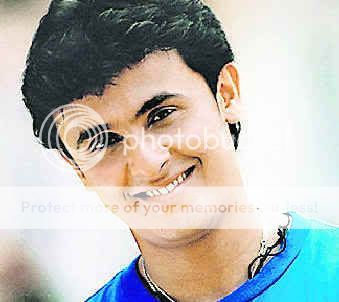

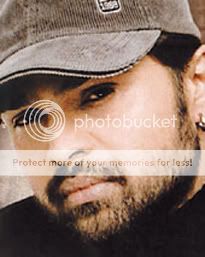
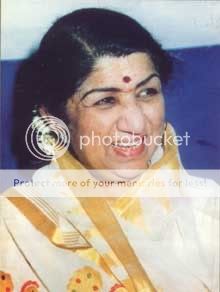

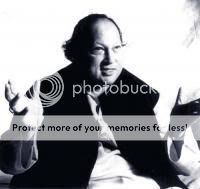

comment:
p_commentcount